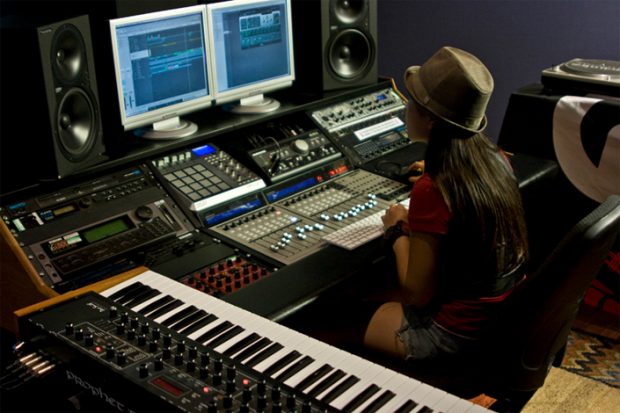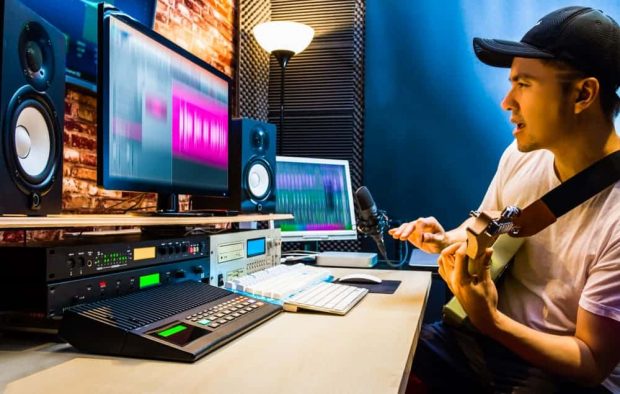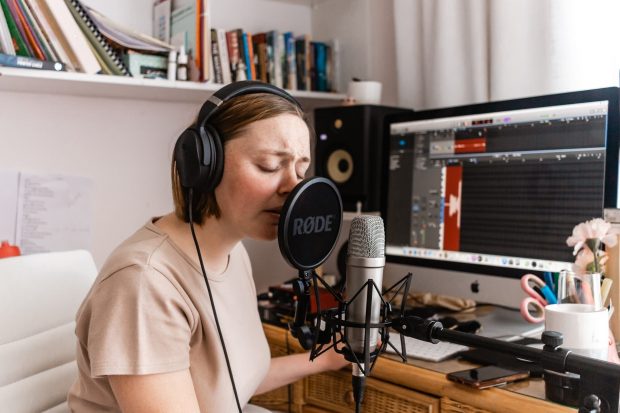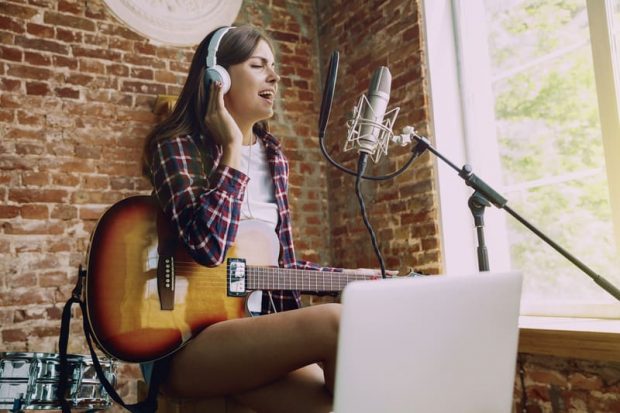Do you love making music but don’t have the budget for a professional recording studio? Or maybe you just want the ability to record whenever you feel inspired? Either way, setting up your own home recording studio is a great option! In this post, we’ll go over what you need to get started and share some tips on how to make the most of your space. Let’s get started!

Choose the right room in your house
The room you choose to set up your studio in is one of the most important decisions. Think about what sorts of instruments and sounds you want to record, as well as how much space you have available. Typically, in a bigger room you’ll be able to get a lot better feel for your sound, especially if you mix on studio monitors. Although, do be careful of ceiling height, as tall ceilings are a recipe for reverb! Small spaces also make things difficult when trying to arrange your equipment in a way that makes sense for recording purposes. So if possible, try working out the footprint of all your equipment first before choosing the room. Do so and it should prevent you from choosing a space that isn’t in proportion with your needs.
You may need some sort of noise insulation

A big part of setting up a home recording studio is keeping unwanted noise out. If you live in a busy area, or if your roommates like to blast music at all hours of the night, you’ll definitely want some noise insulation. This can come in the form of foam panels, rugs, curtains- whatever works best for your space and budget. Plus, it never hurts to have a little soundproofing in your studio just in case!
Purchase the necessary equipment
If you want to set up a studio in your home, it’s likely that you already have some of the key ingredients. If not, don’t panic! You can purchase all of these items at any music store or online for a relatively cheap price. Be sure to do some research and shop around before buying anything major like amplifiers and microphones- you’ll probably be able to find better deals than if you buy them new. You can follow any Music Magazine to find the best reviews and suggestions related to music equipment, and you can even search for a list of their top recommended products for setting up your home recording studio.
Plus, used equipment is oftentimes just as good as brand-new pieces, so feel free to look there too! Here are some of the essential pieces of equipment you’ll need for your home studio:
– Computer (with recording software)
– Audio interface
– Microphone(s)
– Studio monitors
– Headphones
Set up your recording space

Once you have all of your equipment, it’s time to set up your recording space! This can be as simple as setting up a table in your bedroom or as elaborate as building a full-blown studio in your basement. Here are some tips for setting up your space:
– Make sure the room is quiet and free from distractions
– The room should be well-lit but not too bright
– Make sure the room is big enough to accommodate all of your equipment
Learn about the different types of microphones
There are tons of different microphones out there, and they each have their own unique sound. Let’s go over the three main types:
-
- Dynamic microphones: These are the most common type of microphone and are great for capturing vocals or instruments. They’re durable and can handle high sound levels without distortion.
- Condenser microphones: These microphones are more sensitive than dynamic microphones, making them ideal for recording softer sounds like vocals or acoustic instruments. They also tend to produce a brighter sound than dynamic mics.
- Ribbon microphones: Ribbon microphones are less common than the other two types, but they’re known for their warm, mellow sound. They’re perfect for recording jazz or blues music.
Record your music!

Now that you have your space set up, it’s time to record some music! Make sure all of your equipment is connected correctly, and then start recording. Once you’re done with a take, don’t forget to label the file so you can find it later on! You can also use some free music writing software to improve your recording quality. Most of these software applications are very user-friendly and easy to learn. Make sure you research thoroughly before you decide on one.
Learn about the basics of home recording
Even if you’re not planning on recording anything right now, it’s still a good idea to learn about the basics of home recording. This will help you when the time comes to actually start recording. You’ll need to know things like microphone placement, how to use compression and EQ, and more.
There are plenty of online resources available that can teach you everything you need to know. Start with some basic tutorials and then move on to more advanced topics as you progress. With a little bit of practice, you’ll be able to create recordings that sound just as good as those made in professional studios!
Experiment with different sounds and techniques
Once you’ve gotten the basics down, start experimenting with different sounds and techniques. This is where having your own home recording studio really comes in handy! Try out new mic placements or effects to see what works best for each song. How do vocals sound when they’re recorded through a guitar amp? How does that synth part sound on headphones instead of monitors?
This process can help you develop your signature “sound”. You’ll be able to tell which songs were made using this method just by listening. Making music like this also gives you more freedom than if you had professional producers who might want things done their way rather than yours!
Take advantage of online resources and communities
There are a lot of great online resources and communities when it comes to home recording. YouTube is filled with helpful tutorials, and there are plenty of forums where people can share tips and advice. If you’re stuck on something or just want some feedback on your latest song, these places are a great resource!
Conclusion
Setting up your own home recording studio is a great way to create music on your own terms. It can be a bit of an investment to get started, but the results are worth it! With a little bit of practice and some helpful tips from online resources, you’ll be able to create amazing-sounding songs in no time.
Read More:

